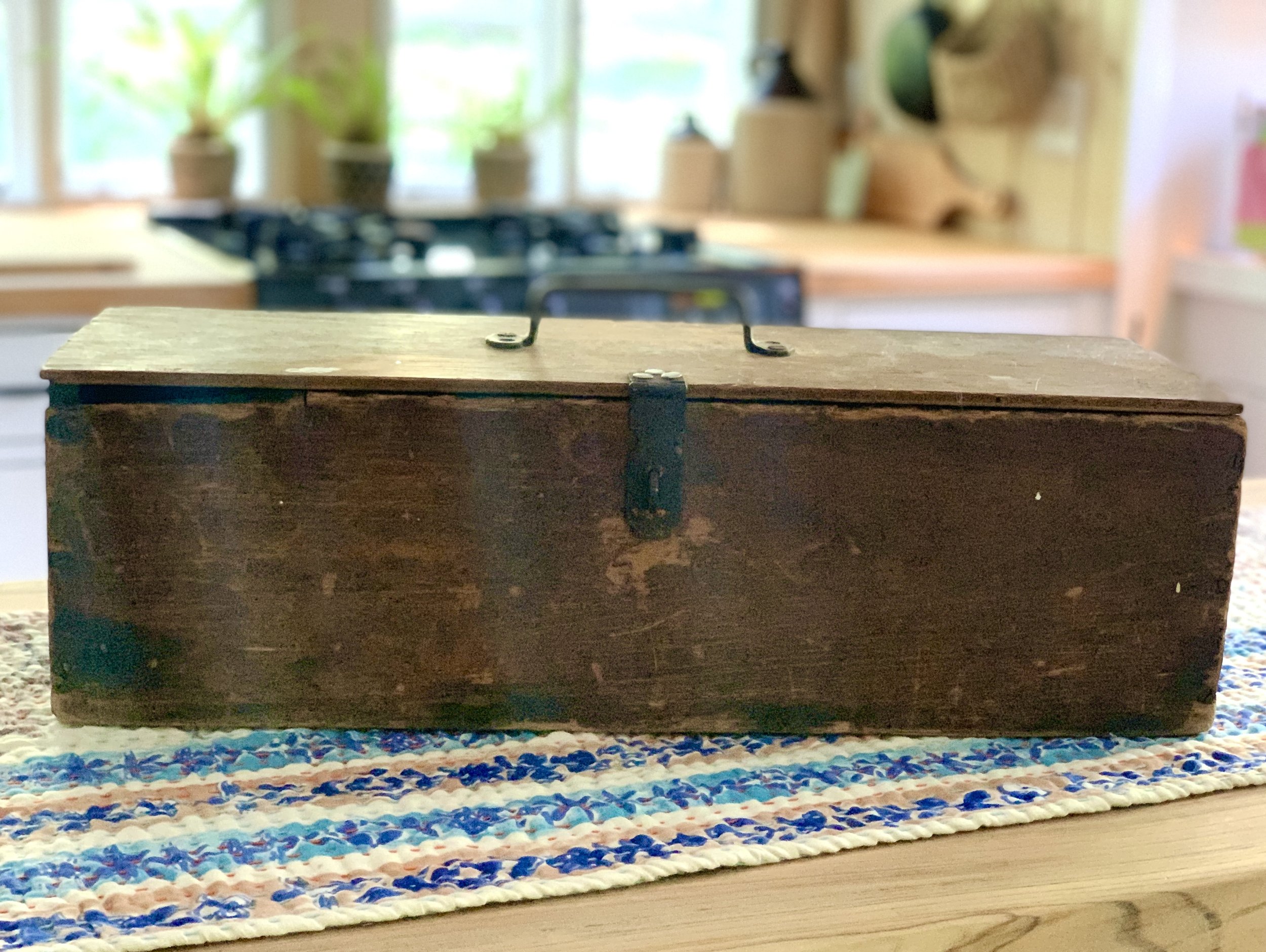Declutter & Stay Organized
5 Steps to Declutter &
10 Habits to Stay Organized
In my quest to come up with simple steps to declutter a home, I found several options claiming to be the solution to the problem. It’s quite ironic that the solution to declutter is a wild goose chase of options that go from “throw it out in 5 seconds if you can’t remember the last time you used it” to “keep it if you hesitate to throw it out in 3 seconds”. It seems the world of decluttering is cluttered with solutions. So here I go adding more.
This first list is a simplified collection of ways to declutter your space. The second list is ten habits to form to keep clutter from taking over again.
I wish you the best of luck, and I will now take my recommendations and start my long-overdue basement decluttering endeavor.
Five Steps to Declutter Your Space
Step One - Prepare
1. Decide what to clean. Begin with one small area. This could be a drawer in a room, a counter, a closet, or a small space, like an entryway. If you want to declutter your kitchen, start with a drawer or a cabinet to set yourself up for gradual success. If your goal is the basement, start with one shelf or corner. It’s motivating to feel like you’ve accomplished a task, rather than trying to tackle a huge project and becoming overwhelmed.
2. Consider how you’d like to re-organize your space. If you need baskets, trays, or any organization container, make a note, order it, or commit to getting it as soon as possible. Box stores like Walmart and Costco or organization stores like the Container Store have trays, baskets, bins, mason jars, extra-large Ziplock storage bags – anything your heart desires to keep everything in its place. Or repurpose whatever baskets you have cluttering up your basement or attic.
3. Create five boxes or bins: Throw Out, Donate, Sell, Misplaced, and Put Away (Keep). Misplaced is for items that don’t belong in that space, like a screwdriver in a kitchen drawer, or a child’s toy in your closet. Sell should be limited to something worth money to others. Your child’s old clothes should be donated. So should your grandmother’s inherited dishware. If your goal is to declutter, holding onto things even for a tag sale sometime in the future, isn’t helping.
4. Pick a day and time then set a timer if needed (dedicate 30 minutes, one hour, a day, whatever you feel you can do without becoming overwhelmed).
Step Two – Start Cleaning
1. Begin by taking everything from the small area out and off the space. The drawer, the closet, the shelf – whatever you’re re-organizing, empty it.
2. Clean the area, wipe it down, dust it off, whatever needs to be refreshed and ready.
3. Now, sort the items into their bins. Recommendations: if you haven’t used the item in 6 months to a year, let it go. Donate it, sell it, or toss it. If it’s something you think someone you know would want, take a picture and text it to them. Then put the item into the donate box until they respond yes.
Sentiment and what-ifs are what hinders us from decluttering. If it’s hard to let go of your children’s items, your family member’s belongings, or your treasured wardrobe from the 80s, choose 5 items that you feel are most sentimental to you, or that you’d like to give to someone, someday, and get rid of the rest. Three trash bags of old clothes, six boxes of children’s books, or a set of dishes from the 60s will only make more work for someone you love. Gifting a favorite jean jacket, your son’s three favorite books from when he was little, or a beautiful vase from Great-Grandma is more meaningful. Similarly, for rusty screwdrivers, mason jars full of mixed-up nuts and bolts, or dusty boxes of old lightbulbs, let it go. No one wants the dehumidifier from 1989.
Step Three – Purge and Re-focus
1. Throw out the garbage.
2. Put the donations in the trunk of your car (don’t look twice).
3. Put the box of misplaced items somewhere you’ll see later, but not in the way (in the hall, where you can put the items in their proper place after you’ve finished your first project).
Step Four – Organize with Intention
1. Consider each Put Away item as if it were a fork. Each item should have a place and should be stored with like items. Forks with forks, spoons with spoons, and knives with knives. Use whatever organization system you choose – trays, baskets, bins, mason jars, Ziplock bags, hooks, peg board. You typically want to be able to see and have access to what you organize. Things you use most often should be the most easily available in front. Labels or clear storage containers help keep everything accessible.
Step Five – Repeat and build new habits.
1. Do the same thing for each area of your home or room. Small steps. Set a time. Don’t overwhelm yourself. Slow and steady.
2. Build new decluttering habits from the list below. As you begin your quest to declutter, also adopt new daily and weekly routines to keep clutter from returning.
10 Habits to Stay Organized
1. Buy a shredder. Shred all junk mail and paid bills after the payment processes.
2. Follow the one-in, one-out method. New jeans? Donate a pair you no longer love or wear.
3. Use the basket method: basket at the front door for keys and wallets; basket in the living room for remotes; everyone gets a decorative laundry basket; baskets for chargers; baskets for toys; baskets for sports gear.
4. Use hooks. Hang your purses, belts, scarves, coats, and even jewelry on hooks in your closet. It frees up space and keeps things organized.
5. Use the box method – the same method for decluttering, except make it a habit. A specific box (or basket) for items to donate, sell, and put away. Then follow through weekly with putting it away, donating, or selling it. If it’s trash, toss or recycle it.
6. Build new habits. Get everyone in your household to put things in their place. Shoes go on the shoe rack at the entry. Toys go in the toy baskets. By creating a specific place, just like forks, spoons, and knives, everyone will get into the habit of knowing where they go.
7. Go through your “inventory” weekly. Toss expired food. Donate those holiday decorations you no longer use. Commit to a 15- or 30-minute weekly timeframe where you re-evaluate your living space and purge what isn’t unnecessary. Even one item a week adds up to less clutter over time (52 items a year).
8. Similarly, make it an everyday habit to choose 5 things in your home that should be put away, and find them their forever home. Five things each day (35 items a week). Try this with your kids!
9. Set aside 15 minutes daily for cleaning up and decluttering a specific area. 15 minutes is a short amount of time to feel the fulfillment of an accomplished task. Clean off your nightstand. Shred that pile of old mail. Put the shoes away neatly. 15 minutes, done.
10. Don’t keep items for that possible “future use.” Consider what would happen if you did need it and didn’t have it. Would you find a solution? Could you easily replace it? Would anyone’s heart be broken if they didn’t receive that item at some future date? And consider those that will have to clean up after you if something happens. Think of the work you’re leaving them to deal with your clutter (enter guilt). Let. It. Go.
Now, get started!
(Can you hear the crowd cheering?! Let it go! Let it go! Let it go!)
You might also enjoy…













An all-encompassing post on when to shop, what to buy, and how to store it at home.